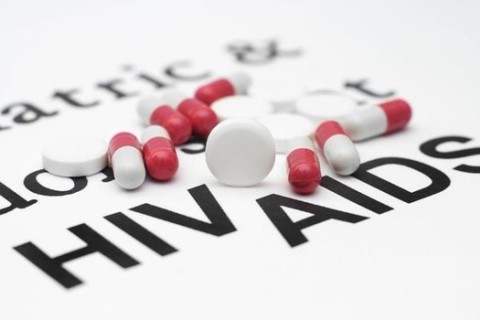By DOREEN NAWA
ALL the love, trust and dedication to a relationship suddenly vanished for Dorothy Chiwele sometime in 2004 after she discovered she was HIV-positive. This happened during medical examinations following an illness she had suffered.
“I was happily married and I was faithful to my husband. I never had a sexually transmitted infection (STI) before,” th highlight women’s contribution e 52-year-old Choma resident said.
“When I got to the hospital, I was shocked to be told that I was HIV-positive. Today no one can be sure about anything. The best is to immediately accept your status and move on,” said Ms Chiwele, a widow.
Ms Chiwele was diagnosed HIV-positive in 2004 and she immediately joined the Chikuni Parish Home-Based Care (HBC). She lives in Michelo area, about 45km south of Chikuni Mission.
She receives antiretroviral therapy (ART) from Chikuni Mission Hospital which is 90km from her home.
Ms Chiwele is not alone, there are many women and children in her area who are living with HIV. “It is not easy for me and other women and children living with the virus to get to Chikuni Mission Hospital.”
“I leave home a day before, in the afternoon. Before I leave, I have to prepare food for my four children and three grandchildren which they need to eat while I am away. And I carry a bit of food to cook for myself on the way,” Ms Chiwele said.
She walks until nightfall, then stops over at a friend’s place to pass the night. Her journey resumes in the early hours of the following day and she makes sure to arrive before the hospital opens at 8:00 hours.
If she gets attended to on time, Ms Chiwele starts off for home the same day.
But if she is late and finds a long queue, it means she cannot leave the hospital until about 15:00 hours. She then has to spend a night at a friend’s place and proceed home the following morning.
“When time to go to Chikuni Mission Hospital comes, I always worry about my travelling alone because I might be attacked on the way. I also worry about my children because I leave them without adult care,” Ms Chiwele said.
When she has money for a bicycle ride, she has to leave home at 02:00 hours am in order to reach Chikuni Mission Hospital in good time.
A bicycle ride costs K20 one way, and K40 for a return trip.
Ms Chiwele lost her husband in 2001, before ART was rolled out in public hospitals.
Today, ARVs are free for anyone who needs them, but accessibility is a challenge for people in rural areas.
“The supply of ARVs that we get is supposed to last 4 months, or 6 months during the rainy season. However, sometimes there are drug shortages. In order to ensure that everyone has drugs, the pharmacy at Chikuni Mission Hospital may only give us enough drugs for one month, so I have to go back the following month,” Ms Chiwele said.
Ms Chiwele takes her medicine at 08:00 hours every morning and adherence is easy with the help of daily reminders on Chikuni Community Radio. In case she forgets or does not listen to the radio, her children remind her to take her medicine.
She is happy to receive ART for free, but wishes accessibility could be made easier. Despite the long distance to the health centre, Ms Chiwele is dedicated to ART because she knows how important treatment is to her health.
“We have many challenges in accessing ARVs in rural areas. I am aging and walking on a long distance affects my wellbeing. It would be better if the supply of ARVs was decentralised,” she said.
The biggest challenge for people living with HIV in rural areas is the routine need for a refill of ARVs.
Policy-makers, health workers and communities have come to appreciate the need to address bottlenecks surrounding ART in order to improve people’s adherence to treatment.
National AIDS Council (NAC) director of programmes Harold Witola said decentralisation of ART to primary healthcare centres in rural areas could reduce congestion and improve access to treatment.
“One strategy is to move antiretroviral delivery from hospitals to more peripheral health facilities or even beyond health facilities. This could increase access to care, improve health outcomes, and enhance retention in treatment programmes.
“Decentralisation supports retention in care and also aids in decongesting the health facilities, thereby reducing the [work] burden of physicians and nurses,” Dr Witola said.
He said prior to decentralisation of ART, care must be taken to address issues that may affect healthcare quality and possibly result in worse health outcomes.
And Chikuni home-based care coordinator Father Kelly Michelo said: “We are not only aiming at improving the patient’s health, but also their education, status and food security, while communities and families are benefiting as well.”
Fr Michelo said failure to decentralise ART services threatens the lives of those living with HIV.
He said decentralisation of ART care to primary healthcare facilities can be one of the effective ways to rapidly scale-up ART, improve equity and access to HIV-related services as well as improve treatment outcomes in resource limited settings.
The spread and volume of HIV care and treatment services has increased significantly in Zambia in the last two decades.
As of mid-2013, around 440,000 people were receiving ART.
However, some people living with HIV who need ART are unable to access treatment or remain in care. This is often due to the time, distance and cost required to travel to treatment centres.
Zambia Daily Mail

 JOIN DRIVERN TAXI AS PARTNER DRIVER TODAY!
JOIN DRIVERN TAXI AS PARTNER DRIVER TODAY!












Sad how the people will die